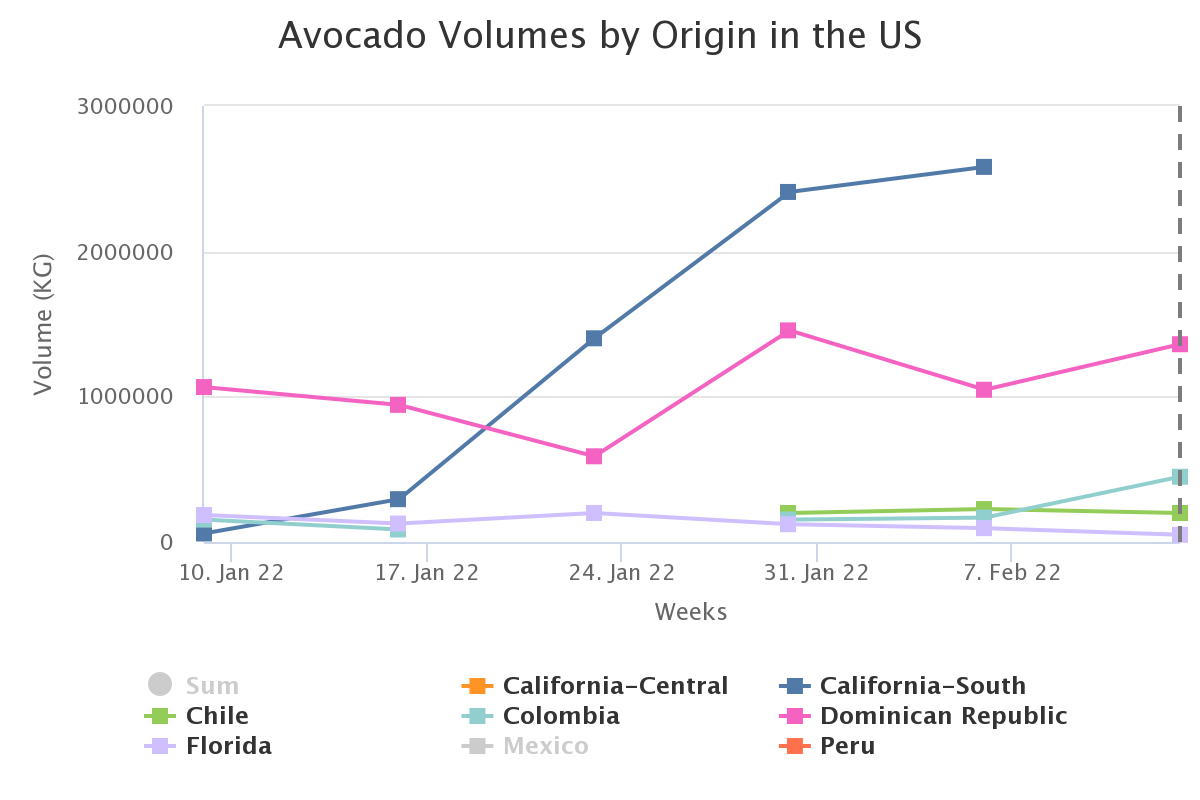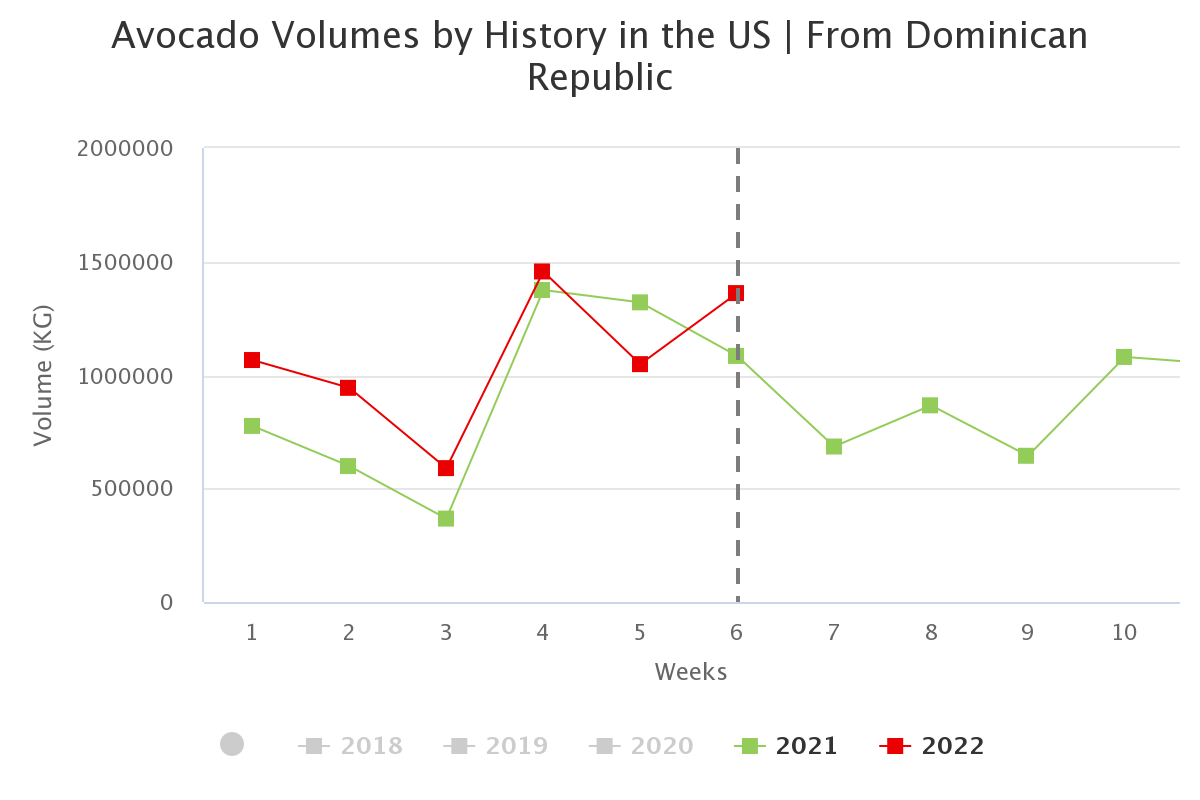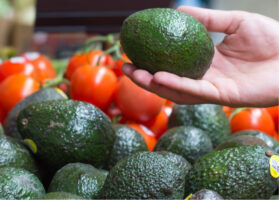Agronometrics in Charts: Dominican Republic’s Tropical Avocados Serving As Stopgaps
In this installment of the ‘Agronometrics In Charts’ series, Sarah Ilyas studies the implications of the suspension of avocado imports from Mexico. Each week the series looks at a different horticultural commodity, focusing on a specific origin or topic visualizing the market factors that are driving change.
The US suspension of avocado imports from Mexico is stoking fears of shortages across markets and restaurants within the United States. Mexico accounts for 83% of the USA’s annual supply of Hass avocados, according to the Hass Avocado Board. It is estimated that each person in the US consumes about 8 pounds of avocados every year and with Cinco de Mayo just around the corner, supplies are running tight and inventories are depleting rapidly. Brokers are scrambling, retailers will have shortfalls, and consumers will feel further pain at the checkout line, says Michael Swanson, Wells Fargo’s chief agricultural economist. Even before the suspension, avocado prices had burgeoned to their highest in the last four years. Prices in week 6 were in the ballpark of $50 per package, about double the price recorded in the previous year.

Source: USDA Market News via Agronometrics.
(Agronometrics users can view this chart with live updates here)
With imports from Mexico halted, there has been a flurry of activity to seek out impromptu solutions. The impending scarcity of Mexican avocados is occurring during the peak season for Tropical Avocados. Dominican Republic Desbry® Tropical Avocados are available in ample supply for immediate shipping; they are grown and distributed by WP Produce Corporation, headquartered in Miami, FL. Tropical Avocados remain green when ripe, are about three times larger than the Hass variety, have a sturdy texture, and stay fresh longer after being cut (slower to oxidize and turn brown). During the last year, peak volumes of 1.3 K tonnes were imported from the Dominican Republic, which, owing to its diverse production areas, altitudes and varieties, has avocados available throughout the year. “We grow and pack Desbry® Tropical Avocados on our sustainable farms and facilities in Florida and the Dominican Republic, depending on the season, and ship throughout North America 365 days a year,” says Christopher Gonzalez, VP of Sales for WP Produce.

Source: USDA Market News via Agronometrics.
(Agronometrics users can view this chart with live updates here)
“The boxes that we used to buy for $30 are now being sold to us for $70, and the larger ones are already selling for more than $100, we would have to sell for at least $120, they’re the last avocados that managed to enter the country before the border closed, and right now they are already being sold like gold.” says Lucy Briones, a spokesperson for ITAMP Food Distributors, which sells fresh produce to restaurants and taquerías in Dallas.
Tropical avocados are savored throughout the East Coast and have recently risen in popularity among chefs and consumers. So far in this season, peak volumes of around 1.4 K tonnes were recorded during week 4. Retailers are striving to diversify the range of their avocado categories and to restock their shelves as avocado supplies from Mexico run dry. According to the California Avocado Commission, Americans consume around 81 million avocados during Cinco de Mayo and with the holiday just a couple of months away, tropical avocados from the Dominican Republic might be able to fill the void left behind by the lack of Mexican avocados, for the time being, at least.

Source: USDA Market News via Agronometrics.
(Agronometrics users can view this chart with live updates here)
In our ‘In Charts’ series, we work to tell some of the stories that are moving the industry. Feel free to take a look at the other articles by clicking here.
All pricing for domestic US produce represents the spot market at Shipping Point (i.e. packing house/climate controlled warehouse, etc.). For imported fruit, the pricing data represents the spot market at Port of Entry.
You can keep track of the markets daily through Agronometrics, a data visualization tool built to help the industry make sense of the huge amounts of data that professionals need to access to make informed decisions. If you found the information and the charts from this article useful, feel free to visit us at www.agronometrics.com where you can easily access these same graphs, or explore the other 21 commodities we currently track.






